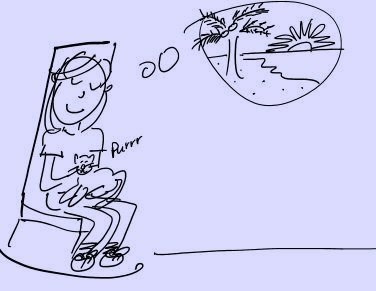
ACT, Parts, and the Polyvagal Theory: bringing these techniques together for change — Rhythm & Resolve
Learn to use techniques from the Polyvagal Theory, ACT, and Parts work to manage a difficult thought or emotion.
Put it All Together
1) Ventral Vagal Mode (Polyvagal Theory). Now, think of something pleasant. It can be the fur of a special animal, a beach you’ve visited on vacation, a favorite picture or video, anything that brings you an uplift when you think of it. This down shifts your nervous system into ventral vagal mode (Polyvagal Theory). Anchor in this. Breathe again.
Something Pleasant
Ventral Vagal Mode (Polyvagal Theory)
2) Mindfulness (ACT- haha and let’s be honest, everything). Now, present in the moment, with your nervous system in ventral vagal, zoom out into your observing self (ACT), which may also be your higher self, oldest and wisest self, your pilot light. From this vantage “notice” what’s going on in your mind.
3) Defusion (ACT). Noticing your thoughts, or saying “I’m noticing that my thoughts are” or “my feelings are” is an example of defusion (ACT). Defusion is de-fusing with the upsetting thought or memory. This simple phrase “I’m noticing that” creates a little distance between the upsetting thought and your observing/higher/older/wiser/pilot light-self.
4) Notice the Part. Now, notice if that negative or intrusive thought is being said by a part of you. A younger part, a parent or caregiver part, a bossy part, a rescuer or protector part, etc. From Internal Family Systems (a leading theory that uses parts work), founded by Richard Schwartz, it’s important to know, there are “no bad parts.” All parts are manifestations of your nervous system, developed at a certain time in your life to protect you from something. In short, something happens, the nervous system creates a template, and that template persists in the form of a part.
